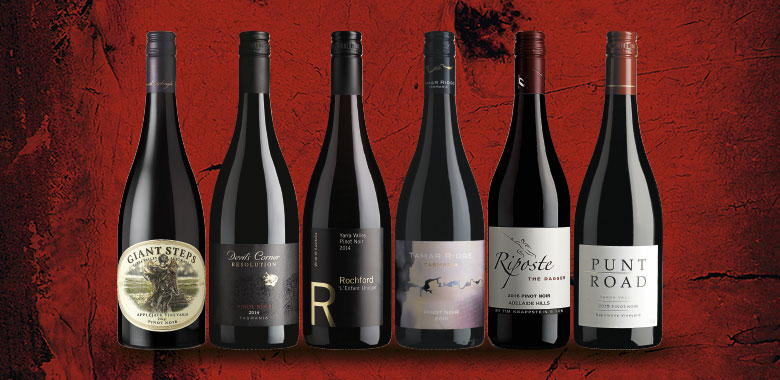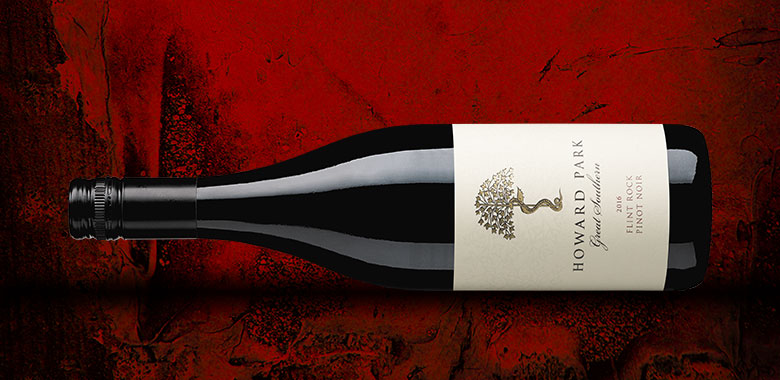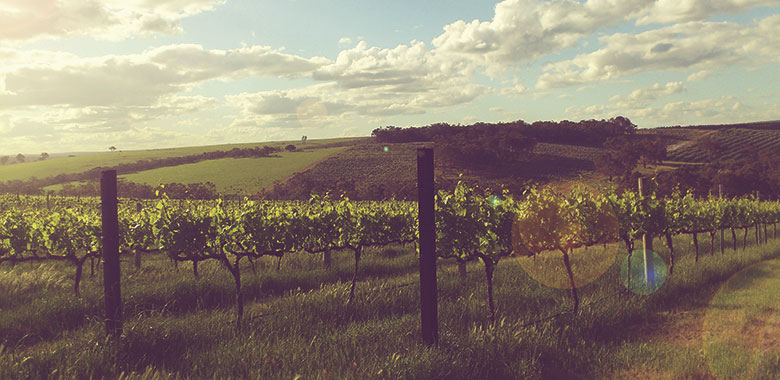
Wine
Pursuit of Perfection - Australian Pinot Noir
Australia's established Pinot Noir regions are continuing to develop and evolve remarkable examples of this varietal. But for the big future of Aussie Pinot, we may need to look west.
I'll admit it - not everyone is a fan of Pinot Noir. But that fact, in itself, is what makes Pinot so enigmatic - aficionados swoon, swillers scoff. And this suits Pinot (and its lovers) just fine because in this land of the tall poppy, it is not always favourable to be too popular.
That said, Pinot is one of the most revered and collected wine styles in the world, with the top examples from its homeland in Burgundy selling for outrageous sums of money. It is generally quite delicate (some say light-bodied), and it takes a certain development of one's palate to truly appreciate its delightful nuances, perfumed aromas, textural elements and supple tannin profile.
It appears that if you enjoy wine for long enough, eventually your palate will look for and appreciate the more subtle and complex style that quality Pinot can provide. A good point that illustrates this comes from winemaker Stephen George, who developed the revered Ashton Hills brand.
"A lot of older gentlemen come into the cellar door and say they love Shiraz, but it doesn't love them anymore," he says. "So we are getting some of my generation moving over to Pinot Noir, and the young kids of today are also really embracing it."
THE ALLURE OF PINOT (FOR THE WINEMAKER)

Winemakers love a challenge, and there is no doubt that Pinot is a challenging grape to grow, and even more challenging to make. The Burgundians have certainly nailed it, but they have been practicing for thousands of years, and this is part of the key. The cool climate of Burgundy has proven to be a major factor, as is the geology of the soils there, but they have also shown the variety to be very site-specific - vines grown in adjacent vineyards, and even within vineyards, can produce very different results. Vine age too, is critical. True of most varieties, but especially Pinot Noir, the best fruit tends to come from mature vineyards, considered to be around 15 years old or more. Yields too, need to be kept low to get the best out of this grape, as it needs all the flavour concentration it can get to show its best.
Australian winemakers have taken these lessons to heart - gradually developing ever cooler areas to grow Pinot, working out the best soil types, and carefully exploring the ideal sites within each vineyard to grow this fickle variety. They're also working out the best clones and the most appropriate vine spacing, and then managing the vine canopy to allow just the right amount of dappled sunlight to reach the ripening bunches. Our vines are getting older, reaching that critical phase of maturity, and yields are managed carefully to coax the maximum from each berry.
Once in the winery, the grapes need careful handling due to their thin skins and low phenolic content, so physical pump-overs are kept to a minimum. These days more and more winemakers are including a percentage of stems in the ferment to enhance the aromatic and textural qualities of the finished wine, and oak usage is more skilfully matched to the style being produced.
THE STATE OF PLAY OF PINOT
Australian viticulturists and winemakers are getting better at producing top quality Pinot with every passing year. And that quality is truly on show in our most recent State of Play tasting. It's been five years since we last had an in-depth look at Pinot Noir in this country. And what a change we've seen in that time! The overall quality of Australian Pinot is certainly on the rise. But what is perhaps the biggest development in the last five years has been the emergence of a potential Pinot giant in the west.
As you will see in our reviews across the following pages, the established Pinot producing regions such as the Yarra Valley, Tasmania and Adelaide Hills are still well represented in our Top 20, but they are joined by newcomers, the cool-climate Tumbarumba region of NSW, and an impressively strong showing from the Great Southern and Pemberton areas of Western Australia. In fact, five wines in the Top 20 are from WA - an amazing statistic given that there were none five years ago.
THE EMERGING PINOT GIANT - WA

We have seen a marked increase in the number and quality of Pinots coming from the West in recent years, particularly from the vast Great Southern area encompassing the five distinct sub-regions of Albany, Denmark, Frankland River, Mount Barker and Porongorup, as well as a secluded pocket of the South West around Pemberton and Manjimup.
So what has led to the emergence of WA as a Pinot powerhouse?
According to second generation winemaker Rob Wignall, whose father Bill pioneered Pinot production in Albany, there have been a number of small improvements that make up the overall picture. He believes that climate change has been a significant and positive factor, moving the region's climate into more of a semi-Mediterranean situation with mild summer days and a reduction in rainfall throughout the growing season, leading to improvements in disease control and better canopy management.
In addition, Rob feels that better oak selection and winemaking practices such as 'cold soaking' of the must prior to fermentation have led to improvements in the finished product. He is also a strong advocate for screw caps, believing that the delicate fruit characters of Pinot really shine under this closure, and that they also enhance the age-ability of the wines.
Luke Eckersley, from regional icon Plantagenet Wines in Mt Barker, points to the variations in micro-climates and soil types across the Great Southern region as a factor.
"Pinot Noir styles are varied with complex savoury styles from Denmark; elegant perfumed styles from Porongurup; rich fruit driven styles from Mount Barker; big robust styles from Albany; lighter primary fruit styles from Frankland River," he says.
Michael Ng, winemaker from Rockcliffe in Denmark, adds that the cool climate with coastal influences allows full flavour development in the fruit, while still allowing for wines of finesse and savoury complexity.
And a bit further west, Coby Ladwig of Rosenthal Wines points to the steep hills and valleys of the Pemberton region creating many unique micro-climates that enable varied grape growing conditions, "allowing us to create extremely complex and elegantly styled wines from one region", he says. While neighbouring Manjimup, with an altitude of 300m and therefore the coolest region in Western Australia, has cold nights and warm days ideal for flavour enhancement.
PERFECTING THE FUTURE
In summary, Pinot Noir in Australia is in a healthy position, with the established regions in Victoria, Tasmania and South Australia producing more consistent and ever improving results. Equally exciting are the emerging Pinot Noir regions such as those in WA, as well as Tumbarumba and Orange, that show that the future for Pinot in Australia is bright. So, if you find your Shiraz doesn't love you as much anymore, perhaps look to Pinot, and when doing so, glance west.
THE WINE SELECTORS TASTING PANEL
The wines in this State of Play were tasted over a dedicated period by the Wine Selectors Tasting Panel, which is made up of perceptive personalities and palates of winemakers, international wine show judges and wine educators. With an amazing 140 years collective experience, they love wine and they know their stuff.